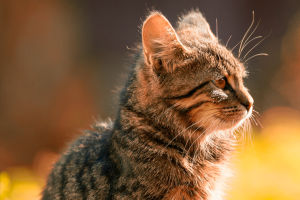The lynx is a member of the cat family, resembling a typical house cat in appearance, but significantly larger, making it a medium-sized animal.
Its average body length ranges from 85 to 105 cm, its tail measures 20 to 31 cm, and it weighs between 20 and 30 kg. With a stout body, long limbs, and a short, thick tail, the lynx has an imposing presence.
The lynx is adapted to living in cold climates, primarily found in the northern temperate zone, including cold alpine regions.
Its habitats vary extensively, ranging from sub-frigid coniferous forests to cold temperate coniferous and mixed forests, alpine meadows, steppes, shrub steppes, and even deserts and semi-deserts. The lynx's footprints can be found in all these environments.
The coat color of the lynx varies depending on its geographic location. European and Asian lynxes typically have lighter coats, while North American lynxes have darker ones. The lynx has blue-green or yellow eyes, excellent night vision, and can hunt in the dark.
The lynx is a solitary and nocturnal hunter that operates in vast territories without a fixed nest. During the day, they bask in the sun on rocks or hide under trees to avoid the wind and rain. They are excellent hunters, silently stalking their prey and pouncing from a short distance. Their preferred method of attack is biting the prey's neck to quickly subdue it.
The lynx is a mysterious animal, difficult to detect by humans. Its elusiveness is due to its skill at hiding and its quietness when close to prey. The lynx is usually nocturnal, but it may be active during the day when there is an abundance of prey.
The lynx's lifespan is about 10-12 years, with sexual maturity reaching 2-3 years. Breeding occurs at the end of winter and the beginning of spring, with the female lynx having multiple estruses during this period, and can mate multiple times.
The gestation period lasts for two months, and the litter size ranges from 1-6, typically having 2-3 cubs. The lynx cubs follow their mother to learn hunting and survival skills and begin to live independently between 6 months to 1 year of age.
The lynx is an important indicator species for ecosystems, reflecting their health. The lynx requires a relatively primitive natural environment to survive, and its presence ensures that the area has a relatively complete ecosystem.
Historically, the lynx was found throughout Europe, but by the mid-19th century, it began disappearing from some parts. Although it was later reintroduced, the number of reintroduced groups was relatively low, with most having less than 200 individuals, and some having less than 100.
Currently, the living conditions of Eurasian lynxes in Europe have stabilized, and the global population is approximately 31,510-32,510 individuals. From the Ural Mountains to the west coast of the Pacific Ocean, there are about 22,510 Eurasian lynxes.
Despite the lynx's widespread distribution and relatively large population, it faces many challenges, including habitat destruction, human hunting, and diseases. The Iberian lynx is a classic example of population decline, where the number of individuals has decreased by about 80% in the past 20 years.
The lynx is an elusive, solitary predator that thrives in cold climates. Its unique features, such as its adaptability and importance in ecosystems, make it a fascinating animal that warrants conservation efforts to ensure its continued survival.


